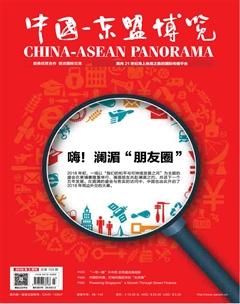China—ASEAN Youth Summit: Building Cooperation Bridge With Youths
Li Yizhi Zhang Xiaoyan
Initiated by ASEAN international students in China and their Chinese counterparts in 2016, the China-ASEAN Youth Summit is committed to building an exchange platform for youths from various countries. Aimed at gathering college students who are interested in political, social, cultural and ethnic issues in Southeast Asia, the summit seeks to address such problems in China and Southeast Asia with the force of youths who offer their solutions in the form of debates and exchanges, and to advance the sustainable development of China-ASEAN relationship. Up to 2017, two editions of it had been convened.
Asked about the impression on them, many youth representatives who attended the 2nd China-ASEAN Youth Summit held on November 24, 2017 said that the site was full of friendliness and modesty.
“Before attending the meeting, I did not expect it to be more than an ‘academic feast where I could have a good opportunity to make exchanges with ‘leaders of all walks of life, but it turned out that when I was right in the venue, all of my pores told me that I was struck not only by the charisma of knowledge but also by the friendly and enthusiastic atmosphere,” said Wang Siqi, one of the 176 attendees of the 2nd China-ASEAN Youth Summit.
Wang also emphasized that the experience of the summit was quite different from that of Model United Nations in that it was richer in content, warmer in atmosphere and more cordial in relationship.
“By holding consultation at this summit, we formulate the ‘2030 Vision for China-ASEAN Youth Cooperation which may serve as an important reference for the ‘2030 Vision for China-ASEAN Strategic Partnership between the Chinese and ASEAN governments,” added Wang.
Kishore Mahabubani, a Singaporean academic and diplomat and author of The Great Convergence: Asia, the West, and the Logic of One World, once said that ASEAN as it is today is the result of compromises to a large extent. The friendliness that the young people felt at the site of the 2nd China-ASEAN Youth Summit might derive from the manner of exchanges adopted by China and ASEAN that is featured “harmony in diversity” and accommodates the comfort of all parties concerned.
Another highlight of the summit was that each item of the mock conference was given the emphasis of “implementation”. The representatives were expected to complete a blueprint or an action plan that was to be submitted to chairman of the committee before the conclusion of the summit. Feasible youth projects and solutions would be handed over to Association of Southeast Asia of Peking University, China for execution with other institutions.
As the Malaysian representative of “Lancang-Mekong River Cooperation Youth Action Plan” of the summit, Liu Yanlu had intended to open her eyes only in the field of ASEAN at the meeting, but with the deepening of exchanges with the peers from other countries, she found that she was far more rewarded by the event than expected. In her opinion, the exchange with young people from different countries has enabled her to hear the true voice of ASEAN countries.
“The summit struck me most that most of the attendees came with practicalness, openness and research achievements. We did not hold empty talk over the Lancang-Mekong Rivers Cooperation mechanism, neither did we do things unconventional only but we made down-to-earth work to delve into the operational level from country to country, as a policy blueprint was highly implementable itself,” said Liu.
“As the representative from Malaysia, I noticed that my country as an outsider was not represented in the Lancang-Mekong River Cooperation mechanism,” said Liu. She also said that as a result, Malaysia turned to exploring how to balance this mechanism and that of ASEAN with the force of youths so that the two could be integrated to promote the regional development as a whole.
“‘The road ahead is long and has no ending, for the study of China-ASEAN cooperation and the Lancang-Mekong River Cooperation mechanism, we still have a long way to go,” said Liu, citing a verse from an ancient Chinese poem.
As Chinese President Xi Jinping said, “Endowed with most vitality and dreams, youths will be the leader and builder of the future”, the future of the world belongs to the younger generation. Boasting the most creative ideas and the best education resources, youths of China and ASEAN countries are the force with strong potential and vitality.

